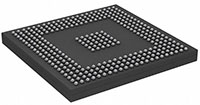By Renesas Electronics America 85

The RZ family of processors from Renesas has enhanced networking functions and enables a high degree of real-time control by leveraging the proven Arm® core and Renesas' original technology. The high-performance RZ/A series MPUs retain the ease-of-use of Renesas microcontrollers (MCUs) while combining Renesas' proprietary technologies and the Arm ecosystem. RZ/A devices offer up to 10 MB of on-chip SRAM, which can buffer up to WXGA resolution graphics without the need for external SDRAM. This capability is married with the device’s ability to execute code in-place (XIP) from QSPI Flash, which simplifies board design.
Coupled with its high-bandwidth 128-bit wide parallel data bus, the RZ/A supports faster graphics, digital audio signal processing, device control, and more. Moving to MPU designs for MCU designers is a hard transition. With the internal memory bus, simple clock-tree structure, and two DC rails that do not require specific sequencing, the RZ/A family reduces the hardware design effort to complete a system. Renesas provides source code and layout examples in Starter Projects that enable customers to spin their custom design quickly while minimizing implementation errors. Since the result is a project that multiple components have already been configured to work together, users may simply remove the portions that do not apply to their product’s requirements. The RZ/A1 series of products support both RTOS and Linux. In many cases, customers can test out embedded Linux on their product board without any HW modification due to the low RAM requirements for RZ/A XIP Linux.
| Features | ||
|
|
New Products:
R7S721000VCBG#AC0R7S721000VCFP#AA1R7S721000VLFP#AA0R7S721001VCBG#AC0R7S721001VLBG#AC0R7S721010VCBG#AC0R7S721010VCFP#AA0R7S721010VLFP#AA0R7S721011VCBG#AC0R7S721011VLBG#AC0R7S721020VCBG#AC1R7S721020VCFP#AA1R7S721021VCFP#AA1R7S721021VLFP#AA1R7S721030VCBG#AC0YGRPEACH43LCDSHIELDYGRPEACHFULLYGRPEACHLCDSHIELDYGRPEACHNORMALYLCDRZA1H